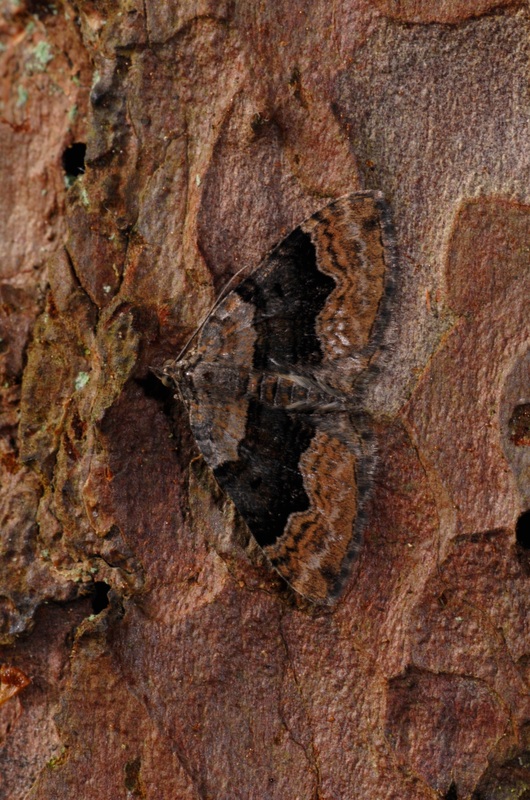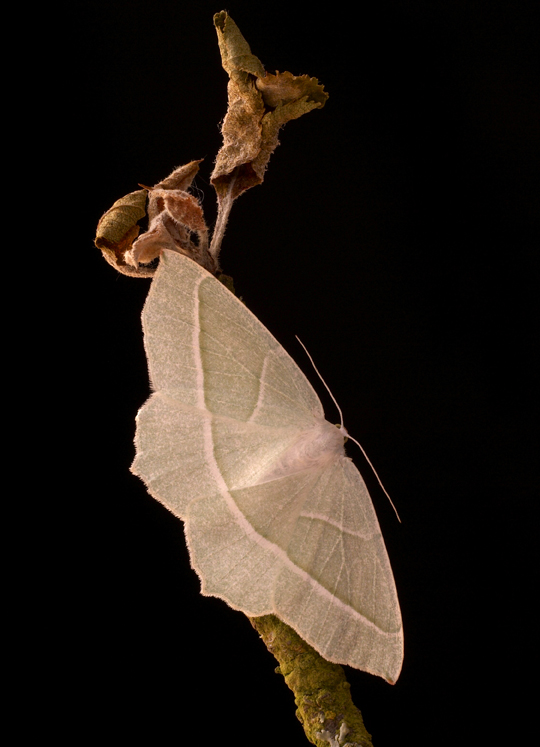Like some moths featured in previous weeks, a species apparently advancing north is the Large Twin-spot Carpet. First recorded in the south of County Durham as recently as 2006, the species has now reached Chester-le-Street just ten miles north of the woodlands here at the University. Conversely, the melanistic form aethiops of Dark Arches is more frequently recorded in the north than it is in the south of the country - which is likely due to the benefits of an ectotherm being darker-coloured in a cooler climate. It would be interesting to see if, in contrast to those species arriving from more southerly latitudes, this form becomes progressively scarcer here as the advantages of melanism become lost in a changing climate. However, a second plausible theory for northern melanism in night-flying moths is that a dark-coloured individual would be more difficult for a visual predator to spot in high-latitude regions, where it may remain relatively light until very late into the evening.
Other visitors to the trap this week included the Light Emerald - a relatively large, attractive species which is also frequently found settled on the foliage around the trap - and the Lesser Swallow Prominent, whose larvae would have fed on the numerous Birch trees in this particular part of the woodland.




 RSS Feed
RSS Feed
